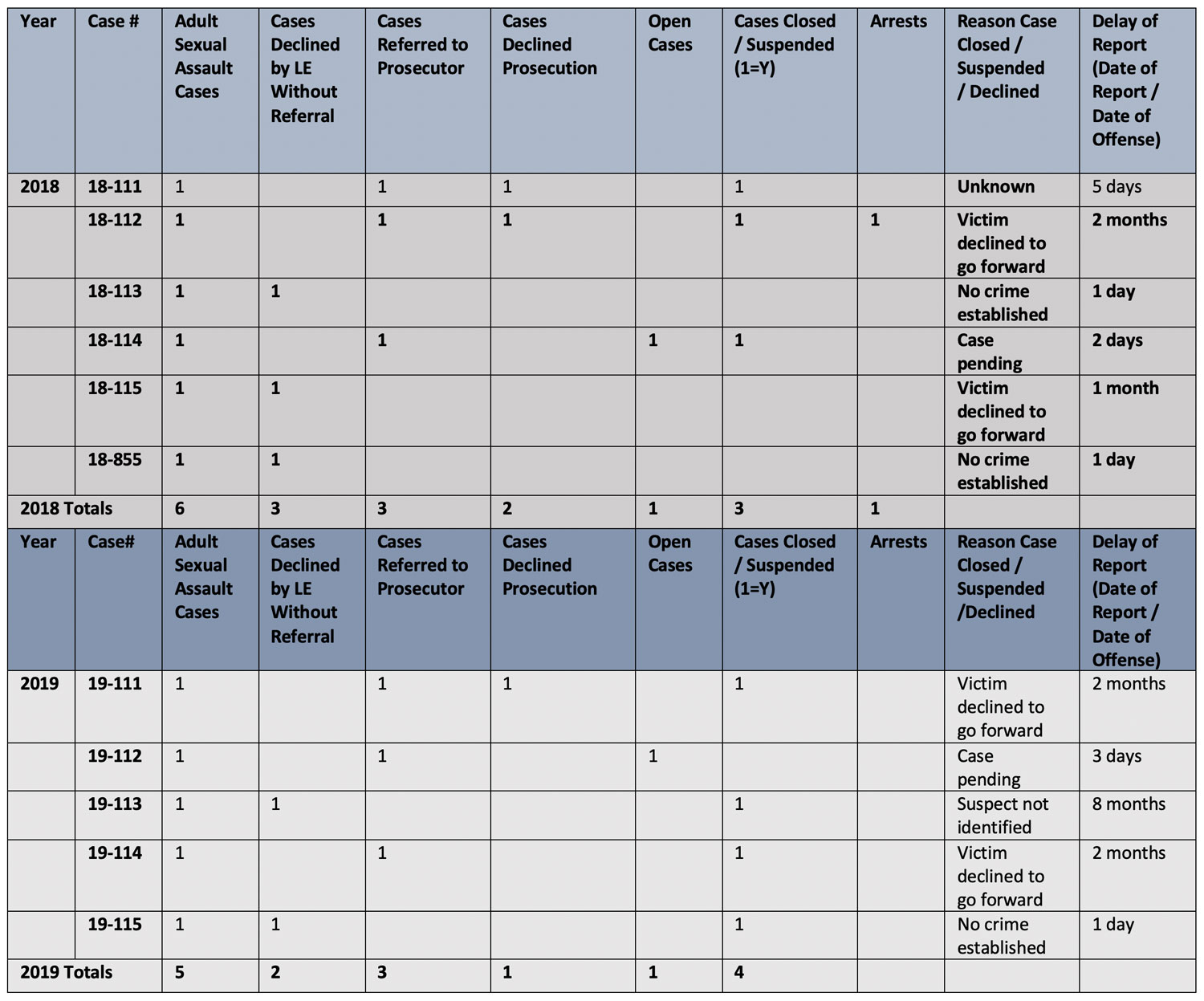Most often, sophisticated data sharing systems are unavailable or not readily accessible for a prosecutor’s office to capture performance measures system-wide. If data-sharing is not automated, the office may need to create a manual data collection tool.
For example, the Office of the Cobb County District Attorney in Marietta, Georgia – one of seven SAJI pilot sites – created an online data entry system to compile, share, and analyze data related to sexual violence crimes across agencies.93 Prosecutors’ offices can utilize information technology (IT) personnel to create data entry systems similar to Cobb’s, which centralizes data from the prosecutor’s office, the county’s police department, and a community advocacy organization.94
Even without IT, prosecutor’s offices can easily collect and manually enter data from different sources. This example that follows uses an Excel workbook, with simple auto-populate formulas, to collect data from multiple agencies.
The workbook is comprised of multiple spreadsheets. Each participating agency can use a spreadsheet within the workbook to collect its particular data. Data from each individual stakeholder or agency is rolled up into one sheet (in this sample, Sheet A) that feeds into their outcome measures.
A simple formula, which pulls data manually entered into Sheet B (see below), auto-populates the data in Sheet A. For example, when any adult sexual violence case is entered into Sheet B, the total is automatically calculated and auto-populated into the corresponding column in Sheet A, using the formula (=‘Yourtown PD’!B995). The same formula is used to calculate and populate the corresponding column for each performance measure in Sheet A. Each stakeholder agency would have its own sheet that would also populate into Sheet A. There is no limit to the number of sheets that can be included in the workbook. Large jurisdictions with multiple agencies will likely have multiple sheets making up the workbook.
Sheet C is an example of outcome measures from a prosecutor’s office. As cases received, cases declined, etc., are entered, the totals are calculated and automatically populated into the performance measures sheet using the formula (=’Yourtown Prosecution’!D14).
These tables depict a few select outcome measures. Each jurisdiction is free to choose performance measures that fit is specific needs. Multiple years’ worth of data, when available, can be displayed on each sheet.
Ideally, tools of this nature should be viewed as a short-term solution. Substantial work is necessary to keep this type of tool updated. Before undertaking this type of labor-intensive method, consider which personnel will have the responsibility to enter the data. Without an automated system, it is likely that clerical staff or prosecutors will have to do this, significantly increasing their workloads.
It is very important to make the process as practical and efficient as possible; the data will be less useful if not collected and entered in a consistent and timely manner. Assigning a dedicated staff person for the task will improve the process and its accuracy.




